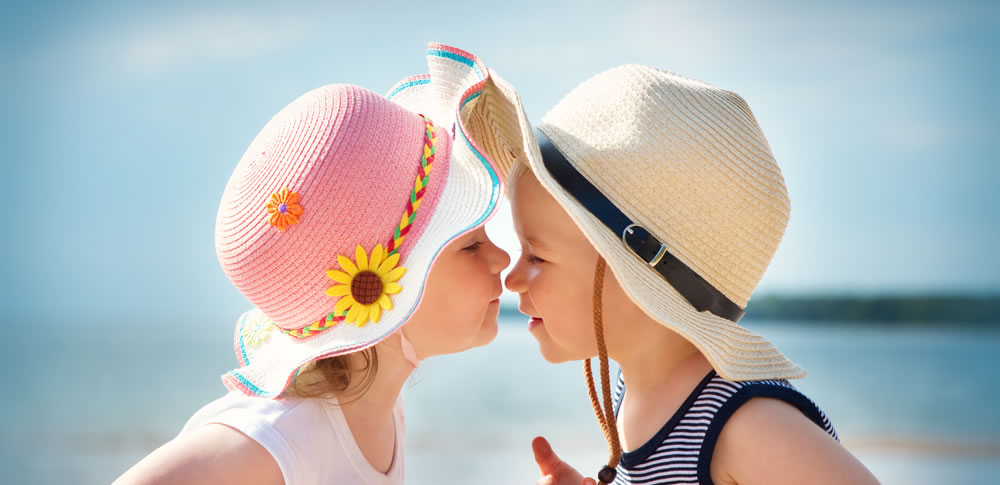Kindness is contagious: Create a caring culture
Published on Tuesday, 07 April 2020
Last updated on Monday, 06 April 2020

Kindness makes us healthier, happier and, according to science, it might even be contagious! Kindness is a natural human response that can flow naturally from even the youngest child and to ensure it stays with children throughout their early years and into adulthood, it should be nurtured, reinforced and celebrated.
Kindness is defined as the quality of being friendly, generous, and considerate, and it includes other caring behaviours like concern, sharing and gentleness. Kindness is also an important component of empathy, which is the ability to place yourself in someone else’s shoes and understand what they are feeling.
Early childhood educators can promote kindness and caring behaviours among children by using every day interactions as opportunities for teaching, modelling and rewarding. The positive effect of kindness reinforces more kindness, reduces bullying and it feels good.
The science of kindness
Kindness is more than just a social skill; it goes beyond something we’re taught by our parents along with saying “please” or “thank you.” Studies suggest that kindness is hardwired.
Even 18-month-old children show strong tendencies to help others. At age two, children prefer to be given a jellybean and have another child get one, rather than just getting one for themselves. And when you force people to decide in 10 seconds or less how much money to give, they give more than when they have extra time to think about it – suggesting that we have generous intuitions.
Everyone has experienced the warm fuzzy glow or ‘helper high’ emanating from an act of kindness and giving. Science demonstrates that this ‘warm’ feeling is caused by the release of opiates, serotonin, dopamine, and oxytocin in the brain. When we give, we feel like we’re getting a reward.
Serotonin plays an important part in learning, memory, mood, sleep, health and digestion. It provides children (and adults) with a heightened sense of wellbeing, increases energy and gives feelings of positivity and self worth.
To get started try these daily activities to teach children what kindness looks like, sounds like and feels like.
Games
Teach acts of kindness and manners through play. Turn ‘Simon Says’ or ‘Charades’ into kindness activities. For example, say "Simon Says open the door for a friend," or for Charades, ask children to act out helping a friend who fell down. Introducing ways to be kind in the form of a game offers children an opportunity to act on what they learned in the real world. If a friend falls down, the child will know what to do because they have learned how to respond.
Role-playing
Children need practice being kind, create kindness cards they can pull out of a hat with simple scenarios they can act out with a friend or two. Ask them to act out how they would respond and what they would say and do. When they are done, offer praise for areas where they displayed kindness, and suggestions for areas that need guidance.
Reading
Another powerful way to increase and develop kindness is through reading. Stories that introduce and expand on the topic will provoke curiosity and discussion. Picture books and scenarios about kindness can help children understand the basics and may also supply the words and feelings associated with kindness.
Good things
This is an activity that takes less than five minutes but is a sure fire way to set a kindness tone for the morning. Use circle time to ask each child to turn to their neighbour and tell them something good i.e. ‘A good thing in my life is…’ or ‘Something good that happened is…’ It can be as small as eating a delicious piece of fruit or making someone laugh. Then open it up to everyone, asking volunteers to share their ‘good thing’ with the class. Encourage children to practice random acts of kindness and share them in the circle.
Creative kindness
Create ‘thank you’ display areas, such as bulletin boards, to display kindness art and take some time every day to share acts of kindness with children. Ask children to think about people they’d like to thank and support them to create a ‘thank you’ note or ‘hug’ coupons for someone special.
Start a kindness project
Start a project as an opportunity for children to consider, practice and learn about kindness. It could be raising money for a community or charity or getting involved in popular movements such as The Kindness Rocks Project.
While undertaking these projects encourage children to help others in the process and talk about how it feels to be kind. Take photos of the finished work and celebrate their act of creating their project by asking them to explore how people will feel when they experience the children’s gift of kindness.
References and further resources
Related Articles

The importance of sharing
Teaching sharing, an essential skill for social, cognitive, and emotional development of children.

Supporting early childhood friendships
Social interaction, bonding with peers, and establishing and maintaining friendships are important developmental milestones that offer children many benefits.

Gardening activities for little green thumbs
Simple ideas for incorporating gardening opportunities in your program and the educational benefits for children.

